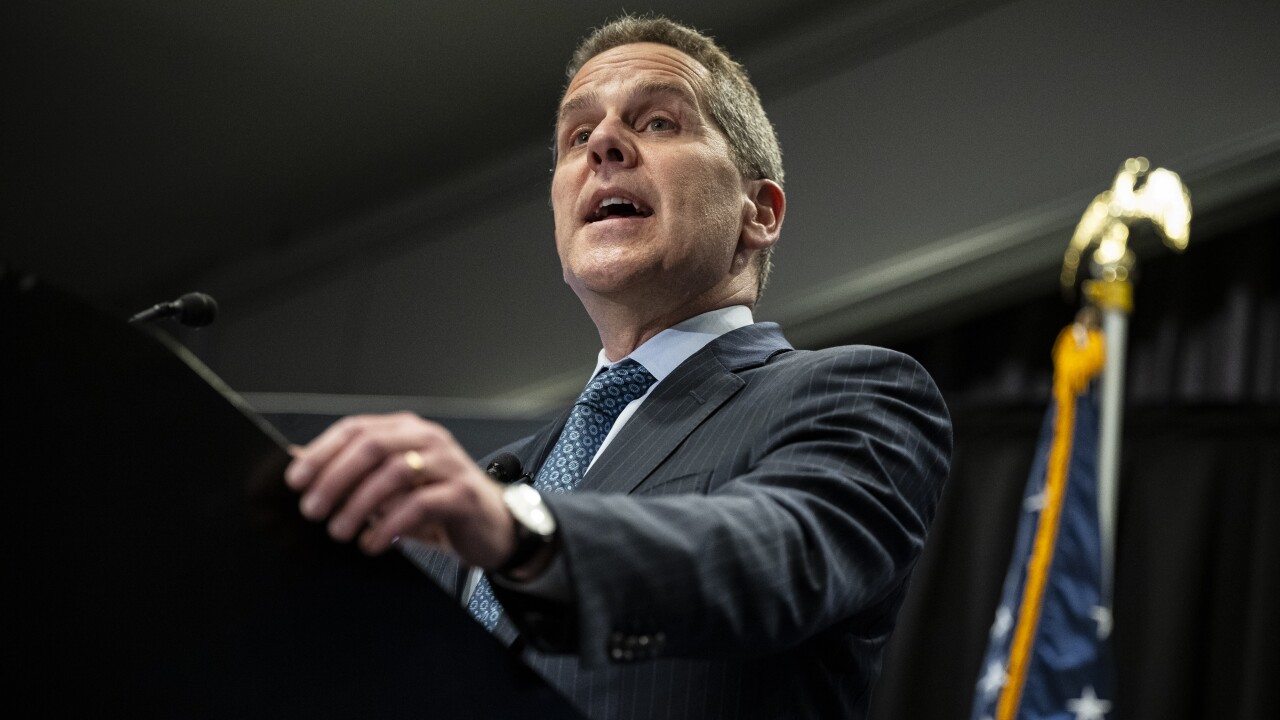-
Regulators' plans to force banks to consider a borrower's ability to repay small-dollar, short-term advances on their direct deposits and limit the frequency of borrowing would likely upend current business practices.
April 24 -
The bureau is still the lead agency, but Dodd-Frank's ban on certain harmful practices known as UDAAP could give other agencies a significant role through their enforcement authority over community banks.
May 14
Imagine, as one of Thomas G. Pareigat's clients once did, an add-on consumer banking product that combines identity theft protection, health benefits, and roadside assistance, all for $5 a month. Now imagine that the fine print for this product discloses that the many of its benefits can be canceled by the seller any time.
Now please don't ever think about this product again, because it would never pass muster with the Consumer Financial Protection Bureau, said Pareigat, a former partner at Lindquist & Vennum in Minneapolis who is now general counsel and senior vice president of The Bancorp Inc. (TBBK) in Wilmington, Del.
Pareigat made that point this week at the American Bankers Association's risk management forum in Baltimore this week, where much of the discussion centered on the CFPB's authority to take action against institutions engaging in what it views unfair, deceptive or abusive acts and practices.
In its most high-profile UDAAP ruling to date, the CFPB slapped Capital One Financial (COF) with a $165 million fine for using deceptive marketing practices to pressure credit card customers into buying add-on products, such as payment protection and credit monitoring.
The CFPB has generally resisted calls to precisely define UDAAP, arguing that it's a common sense thing that is best recognized contextually. But there's still a great deal of industry concern that the term is amorphous. A procession of presentations sought to address these fears, focusing on ways to recognize "What is fair, not just what is legal," as one speaker put it.
"Product disclosures will not erase a UDAAP violation, in fact in many ways, confusing disclosures will hurt you," Pareigat said at the conference. "We haven't received clear guidance on the abusive standard yet, but part of it relates to a costumer's inability to understand a product, or a customer's reasonable reliance on the bank to give them the right product."
Part of successfully designing UDAAP-compliant products comes down to the product's basic value. Products that generate extraordinarily high margins are going to be a killer, said Stefanie Jackman, a Ballard Spahr attorney. In the case of major bank's boom-era captive mortgage reinsurance subsidiaries — which are the focus of an ongoing CFPB kickback probe — regulators started poking around based on the operations' extremely high returns.
"You don't want to be saying 'we make a lot of money on these products' without being able to articulate why that's appropriate," she said at the conference.
A second factor is suitability — whether the product's is well matched to a customer's needs. To demonstrate a new product's value, Pareigot said, banks should carefully document why a prospective product's utility makes it worth the cost. That obligation is even greater for products that are sold to "vulnerable" populations like the elderly or non-English speaking customers.
"There ought to be documentation somewhere in your new product program that focuses on the cost/benefit analysis [for consumers,]" he said. "We're seeing that at some point, the bank is supposed to make the choice for the customer. We're trying to protect customers from themselves."
Simply because a product appears to offer a reasonable value for a target audience doesn't mean that it's necessarily in the clear, however. After a product hits the market, banks should look carefully at whether the product is well understood and being used as intended. If, for example, customers frequently incur fees that were intended to be a deterrent, banks should reevaluate their product's design. Complaints can also serve as a good tip-off that the product is off the mark.
"It would be awesome to have some research to show that [a product] was understood by that market," said Pareigat. "That ultimately created a great tool from a defensive standpoint to counter concerns about UDAAP risk."
Banks also need to look at their marketing. Discretionary upselling of a product is likely to be viewed with inherent suspicion. Offering preferential terms to especially good customers can also draw scrutiny.
"When you're deciding to do that, you need to document why — show this is a long term customer with a high value relationship," Jackman said. "Keeping the documentation of the reason is good."





